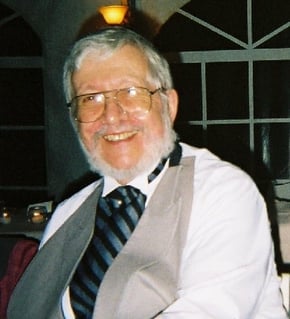As a one-time practicing physicist, I never bothered about why science works. It was only after retiring that I began to wonder about the philosophical ground on which science rests. Delving into texts, I found there were two main camps of philosophers of science: realist and antirealist. A summary of my blog post about the realists and antirealists, Tipping the Sacred Cow of Science—Confessions of a Science Agnostic, is given below.
Realist Philosophers
“Scientific realism … is a quite limited claim that purports to explain why certain ways of proceeding in science have worked out as well as they (contingently) have.”
—Ernan McMullin, A Case for Scientific Realism
Scientists and philosophers who are “scientific realists” believe there is an underlying reality corresponding to a scientific description. Thus, they believe that the so-called “God particle”, the Higgs boson, is real, even though its existence is inferred from theory and high energy particle scattering data.
It should not be surprising that most scientists are scientific realists. Why would a molecular biologist spend his life exploring the mysteries of the human genome unless he/she believed that this was a “true” explanation of how molecular chemistry expresses itself in heredity and our biology? Why would I (when I was an MRI physicist) have spent too many hours per day wondering how the state of biological tissue affected the environment of water protons, unless I believed that protons existed and that their magnetic properties depended on physical interactions with their tissue environment? To most of us scientists, it’s more than a game; it’s a passionate desire to know how nature operates, and for those of us who believe in God, to understand His wisdom in Creation.

Anti-Realist Philosophers
“The fundamental laws of physics do not describe true facts about reality. Rendered as descriptions of facts, they are false; amended to be true, they lose…explanatory force.”
—Nancy Cartwright, How the Laws of Physics Lie
Antirealist philosophers deny the fundamental reality of scientific theories/laws/entities and claim that science is validated only empirically, by the truth or falsity of the predictions derived from scientific theories. For these “antirealists” there are no scientific laws, and the reality of theoretical entities–quarks, gluons, etc–is problematic. According to them, scientific theories do not mirror reality, veiled or unveiled. Their philosophical positions are illustrated by Nancy Cartwright’s, How the Laws of Physics Lie, and Bas van Fraassen’s The Scientific Image, discussed below.
Nancy Cartwright does not believe that fundamental, theoretical scientific equations are true (e.g. Maxwell’s equations, the Schrodinger equation), although she does believe that theoretical entities are real (e.g. the electron, quarks), and that phenomenological equations are true (relations empirically rather than theoretically derived, such as Poiseuille’s Law of viscous flow). Her reason for disbelief, supported by a number of examples, is stated in the quote above. The equations have to be amended, supplemented, supplied with empirical fudge factors, or require conflicting mathematical prescriptions to describe real situations. I won’t go over all her examples (Snell’s Law of refraction, Crooke’s radiometer, quantum damping, the BCS theory of superconductivity) but only say they are well chosen to demonstrate her knowledge of mathematical physics.
Bas van Fraassen believes that a scientific theory can be judged to be true if it is empirically verified, and only by that test. Here I agree with him–to an extent. He believes that theory does not correspond to a real world, discoverable by science–that would be a metaphysical assumption, a truly bad thing for an empiricist philosopher. With this judgment, I might disagree. Van Fraassen also argues that theory cannot be evaluated as a best explanation for phenomena. (The ether is one example of an incorrect but plausible explanation for how electromagnetic waves vibrate.) The function of theory is “to save the phenomena,” i.e. to give a concise description of real phenomena that is empirically verified. He also limits that which might be described as truly real, an “observable,” to that which can be directly observed (in principle), such as Jupiter’s satellites. That which can only be detected by use of instruments—chromosomes, electrons, quarks—would not be an observable and thus not “real.”
The antirealists looking at the history of science, see failed theories, theoretical entities disproved by experiment–phlogiston by Count Rumford’s cannon-boring experiments, the ether by the Michelson-Morley experiment. On the other hand, one could argue that theory is converging to the truth–the Higgs boson confirmed by the CMS experiments—even though that convergence is an article of faith.
Concluding Thoughts
I myself have faith in science as a partial mirror of reality. I believe that the world God created must be an orderly and intelligible world, not the “dappled world” of Nancy Cartwright, with one set of scientific laws here and another there–Bach, not Cage. God gave us intelligence to help us understand his creation; the reality that remains veiled is so because of limits to our intelligence, not because God is irrational. (See Aquinas, Summa Theologica, Q. 93, Article 1.)
This excerpt is taken from Dr. Kurland's essay How We Believe; How Science Works, for the full article, click here.

